-
 Bitcoin
Bitcoin $117800
0.42% -
 Ethereum
Ethereum $4436
0.39% -
 XRP
XRP $3.106
0.86% -
 Tether USDt
Tether USDt $1.001
0.04% -
 BNB
BNB $835.4
1.26% -
 Solana
Solana $188.8
2.21% -
 USDC
USDC $0.9999
0.00% -
 Dogecoin
Dogecoin $0.2302
2.98% -
 TRON
TRON $0.3484
-1.05% -
 Cardano
Cardano $0.9212
-1.20% -
 Hyperliquid
Hyperliquid $46.77
-0.77% -
 Chainlink
Chainlink $22.76
5.64% -
 Stellar
Stellar $0.4278
0.68% -
 Sui
Sui $3.771
2.39% -
 Bitcoin Cash
Bitcoin Cash $583.7
-0.91% -
 Ethena USDe
Ethena USDe $1.001
0.04% -
 Hedera
Hedera $0.2520
2.88% -
 Avalanche
Avalanche $24.28
2.56% -
 Litecoin
Litecoin $120.1
1.44% -
 Toncoin
Toncoin $3.452
1.46% -
 UNUS SED LEO
UNUS SED LEO $9.409
-0.95% -
 Shiba Inu
Shiba Inu $0.00001298
2.02% -
 Uniswap
Uniswap $11.01
3.56% -
 Polkadot
Polkadot $3.962
2.81% -
 Dai
Dai $1.000
0.00% -
 Bitget Token
Bitget Token $4.639
1.16% -
 Cronos
Cronos $0.1511
-0.06% -
 Ethena
Ethena $0.7254
2.87% -
 Monero
Monero $255.7
7.41% -
 Pepe
Pepe $0.00001101
2.80%
Why does token economics need multi-chain compatibility? Cross-chain ecology and model adaptability
Multi-chain compatibility enhances token liquidity and accessibility, fostering a robust cross-chain ecology and enabling model adaptability in token economics.
May 16, 2025 at 12:50 am
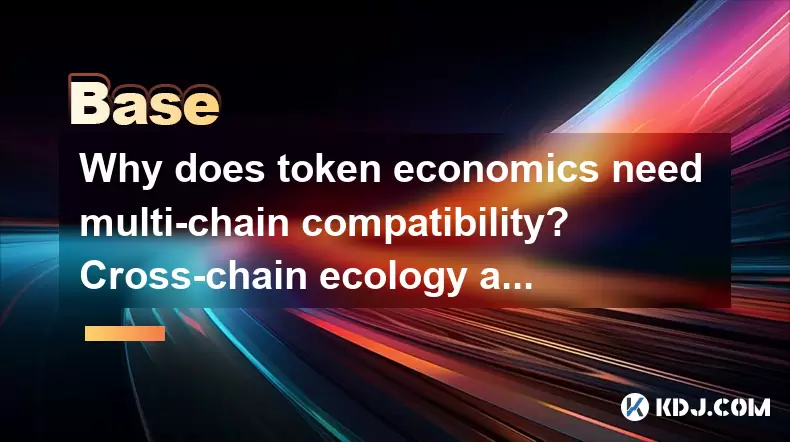
Token economics plays a crucial role in the design and functionality of cryptocurrencies and blockchain projects. One of the critical aspects of modern token economics is multi-chain compatibility, which allows tokens to operate across different blockchain networks. This article will explore why multi-chain compatibility is essential for token economics, focusing on the aspects of cross-chain ecology and model adaptability.
The Importance of Multi-chain Compatibility in Token Economics
Multi-chain compatibility refers to the ability of a token to function seamlessly across multiple blockchain networks. This is vital for several reasons. Firstly, it enhances the liquidity of the token by allowing it to be used and traded on various platforms. Secondly, it increases the accessibility of the token to a broader audience, as users are not confined to a single blockchain ecosystem.
For token economics, multi-chain compatibility ensures that the token's utility and value are not limited by the capabilities or restrictions of a single blockchain. This is particularly important in a rapidly evolving industry where new blockchains and technologies are constantly emerging.
Enhancing Cross-chain Ecology
Cross-chain ecology refers to the interconnected network of different blockchain ecosystems that work together to provide a more robust and versatile environment for tokens. Multi-chain compatibility is essential for fostering a healthy cross-chain ecology.
Interoperability: By enabling tokens to move freely between different blockchains, multi-chain compatibility promotes interoperability. This means that users can leverage the strengths of different blockchains, such as faster transaction speeds or lower fees, without being locked into one ecosystem.
Diversification: A token that is compatible with multiple chains can diversify its presence and reduce the risk associated with being tied to a single blockchain. This diversification can lead to more stable and resilient token economics.
Collaboration: Multi-chain compatibility encourages collaboration between different blockchain projects. When tokens can operate across multiple chains, it becomes easier for projects to integrate and build upon each other's functionalities, leading to a more interconnected and synergistic ecosystem.
Model Adaptability in Token Economics
Model adaptability is another crucial aspect of token economics that benefits from multi-chain compatibility. The ability to adapt and evolve is essential for any token's long-term success, and multi-chain compatibility plays a significant role in this.
Flexibility: Multi-chain compatibility allows tokens to be more flexible in their use cases. For instance, a token might be used for governance on one blockchain, as a utility token on another, and as a means of payment on yet another. This flexibility allows the token to adapt to different economic models and use cases.
Scalability: As the token's ecosystem grows, multi-chain compatibility ensures that it can scale effectively. By leveraging different blockchains, a token can handle increased transaction volumes and user bases without being constrained by the limitations of a single network.
Innovation: Multi-chain compatibility fosters innovation by allowing developers to experiment with different blockchain technologies and integrate the best features into their token's ecosystem. This continuous innovation is crucial for keeping the token relevant and competitive in the ever-changing crypto landscape.
Technical Considerations for Multi-chain Compatibility
Achieving multi-chain compatibility involves several technical considerations that token developers must address. These include:
Bridges and Wrapping: One common method for achieving multi-chain compatibility is through the use of bridges and wrapped tokens. A bridge is a protocol that allows tokens to be transferred between different blockchains, while wrapping involves locking a token on one blockchain and issuing a corresponding token on another.
Smart Contract Integration: Ensuring that smart contracts on different blockchains can interact seamlessly is crucial for multi-chain compatibility. This might involve developing standardized protocols or using interoperability solutions like Cosmos or Polkadot.
Security and Trust: Multi-chain compatibility must be implemented with a strong focus on security. Ensuring that tokens are not vulnerable to attacks or exploits when moving between different blockchains is paramount. This involves rigorous testing and validation of cross-chain protocols.
Case Studies of Multi-chain Compatibility in Action
Several projects have successfully implemented multi-chain compatibility, showcasing the benefits for token economics. Here are a few notable examples:
Wrapped Bitcoin (WBTC): WBTC is a tokenized version of Bitcoin that operates on the Ethereum blockchain. By bringing Bitcoin's liquidity to the Ethereum ecosystem, WBTC enhances its utility and accessibility, demonstrating the power of multi-chain compatibility.
Polkadot: Polkadot is designed to enable interoperability between different blockchains. By allowing tokens to move freely between its parachains, Polkadot fosters a vibrant cross-chain ecology and supports model adaptability for the tokens within its ecosystem.
Chainlink: Chainlink provides decentralized oracle services that can be used across multiple blockchains. By enabling data to flow seamlessly between different networks, Chainlink supports multi-chain compatibility and enhances the economic models of the tokens that rely on its services.
Challenges and Solutions
While multi-chain compatibility offers numerous benefits, it also presents certain challenges that need to be addressed. These include:
Complexity: Implementing multi-chain compatibility can be technically complex, requiring significant development resources and expertise. Solutions to this challenge include leveraging existing interoperability protocols and collaborating with other projects to share knowledge and resources.
Regulatory Compliance: Navigating the regulatory landscape can be more challenging when tokens operate across multiple blockchains. Ensuring compliance with different jurisdictions' regulations requires careful planning and legal expertise. Solutions include working with legal advisors and building compliance features into the token's architecture.
User Experience: Ensuring a seamless user experience across different blockchains can be challenging. Users may encounter issues such as delays in token transfers or difficulties in managing their tokens across multiple wallets. Solutions include developing user-friendly interfaces and providing clear documentation and support.
Frequently Asked Questions
Q: How does multi-chain compatibility affect the security of a token?
A: Multi-chain compatibility can introduce new security risks, as tokens are more vulnerable to attacks when moving between different blockchains. However, these risks can be mitigated through rigorous testing, the use of secure cross-chain protocols, and ongoing monitoring and auditing of the token's ecosystem.
Q: Can multi-chain compatibility lead to fragmentation of a token's community?
A: While multi-chain compatibility can potentially lead to fragmentation if not managed carefully, it can also bring a token's community together by providing more opportunities for engagement and collaboration across different blockchain ecosystems. Effective communication and community management strategies are key to maintaining a unified community.
Q: What are the costs associated with implementing multi-chain compatibility?
A: Implementing multi-chain compatibility can involve significant costs, including development expenses, ongoing maintenance, and potential transaction fees associated with cross-chain transfers. However, these costs can be offset by the increased liquidity, accessibility, and utility that multi-chain compatibility provides to the token.
Q: How can a project assess whether multi-chain compatibility is right for its token?
A: A project should consider several factors when assessing the suitability of multi-chain compatibility for its token, including its target audience, the specific use cases it aims to support, the technical capabilities of its development team, and the potential benefits and challenges associated with operating across multiple blockchains. Conducting a thorough analysis and consulting with experts can help a project make an informed decision.
Disclaimer:info@kdj.com
The information provided is not trading advice. kdj.com does not assume any responsibility for any investments made based on the information provided in this article. Cryptocurrencies are highly volatile and it is highly recommended that you invest with caution after thorough research!
If you believe that the content used on this website infringes your copyright, please contact us immediately (info@kdj.com) and we will delete it promptly.
- Kazakhstan's Crypto Leap: Bitcoin ETF and Central Asia's Digital Finance Future
- 2025-08-13 12:45:19
- BlockDAG Presale Blazes Past $371M: Fundraising Frenzy Fuels Crypto Sensation
- 2025-08-13 13:05:21
- Meme Coins: Chasing the 2025 Surge – Which Will Moonshot?
- 2025-08-13 10:25:23
- Bitcoin's Wild Ride: Rally, Pullback, and What's Next
- 2025-08-13 10:25:23
- Bitcoin, Bitmax, and Institutional Demand: A New Era of Crypto Investment
- 2025-08-13 10:45:12
- Solana, ROAM, and Airdrops: What's the Buzz in 2025?
- 2025-08-13 11:35:13
Related knowledge
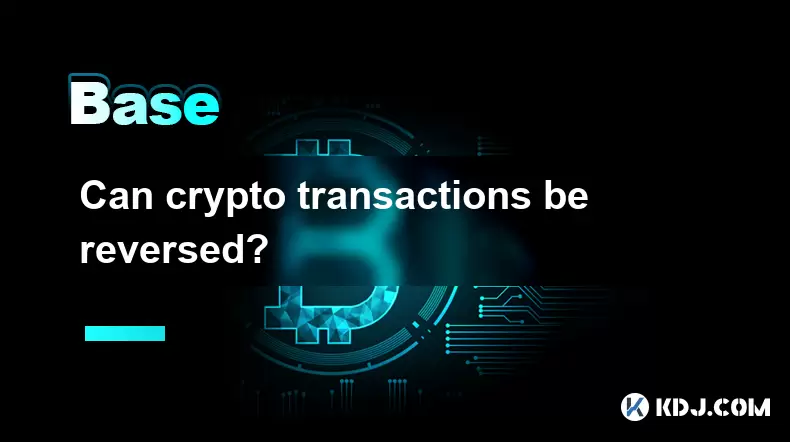
Can crypto transactions be reversed?
Aug 10,2025 at 01:35am
Understanding the Immutability of Blockchain TransactionsCryptocurrency transactions are built on blockchain technology, which is designed to be immut...
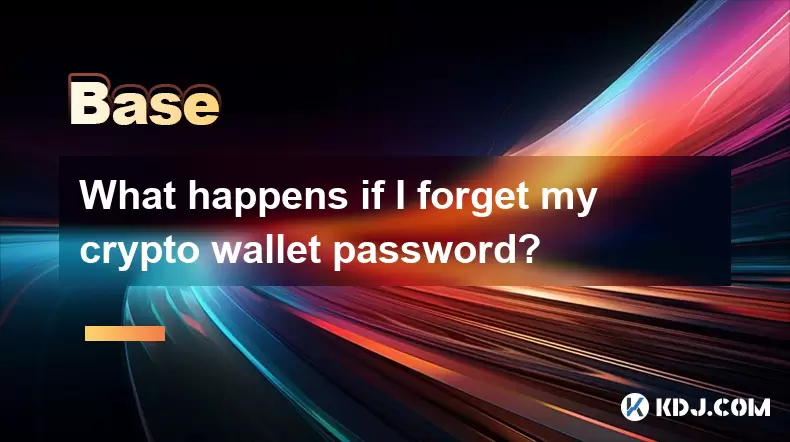
What happens if I forget my crypto wallet password?
Aug 09,2025 at 08:50am
Understanding the Role of a Crypto Wallet PasswordA crypto wallet password serves as a critical security layer that protects access to your digital as...
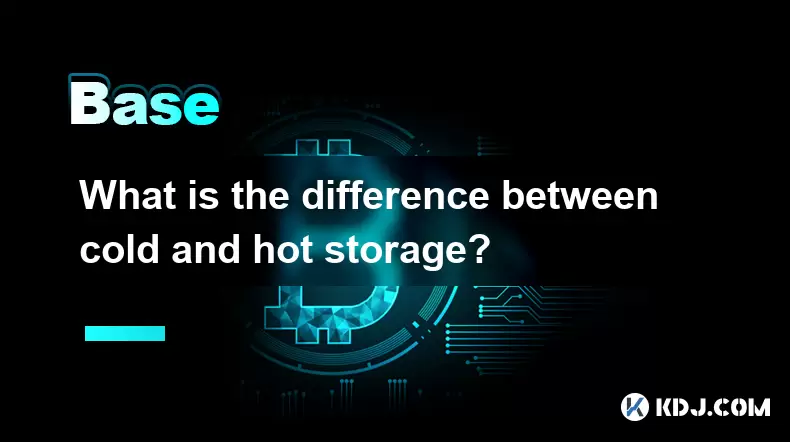
What is the difference between cold and hot storage?
Aug 12,2025 at 01:01am
Understanding Cold Storage in CryptocurrencyCold storage refers to offline methods of storing cryptocurrency private keys, ensuring they are not expos...
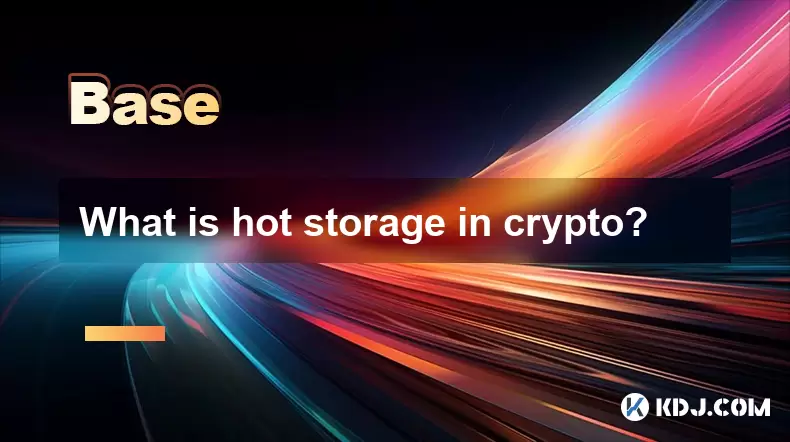
What is hot storage in crypto?
Aug 11,2025 at 07:08am
Understanding Hot Storage in CryptocurrencyHot storage refers to cryptocurrency wallets that are connected to the internet. Unlike cold storage soluti...

What is cold storage in crypto?
Aug 13,2025 at 11:35am
Understanding Cold Storage in CryptocurrencyCold storage in cryptocurrency refers to a method of storing digital assets offline, away from internet-co...
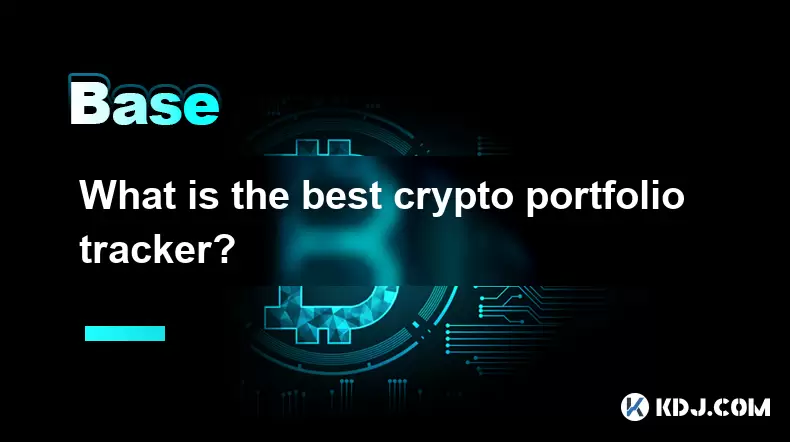
What is the best crypto portfolio tracker?
Aug 10,2025 at 05:08am
Understanding the Role of a Crypto Portfolio TrackerA crypto portfolio tracker is a digital tool designed to help investors monitor the performance of...

Can crypto transactions be reversed?
Aug 10,2025 at 01:35am
Understanding the Immutability of Blockchain TransactionsCryptocurrency transactions are built on blockchain technology, which is designed to be immut...

What happens if I forget my crypto wallet password?
Aug 09,2025 at 08:50am
Understanding the Role of a Crypto Wallet PasswordA crypto wallet password serves as a critical security layer that protects access to your digital as...

What is the difference between cold and hot storage?
Aug 12,2025 at 01:01am
Understanding Cold Storage in CryptocurrencyCold storage refers to offline methods of storing cryptocurrency private keys, ensuring they are not expos...

What is hot storage in crypto?
Aug 11,2025 at 07:08am
Understanding Hot Storage in CryptocurrencyHot storage refers to cryptocurrency wallets that are connected to the internet. Unlike cold storage soluti...

What is cold storage in crypto?
Aug 13,2025 at 11:35am
Understanding Cold Storage in CryptocurrencyCold storage in cryptocurrency refers to a method of storing digital assets offline, away from internet-co...

What is the best crypto portfolio tracker?
Aug 10,2025 at 05:08am
Understanding the Role of a Crypto Portfolio TrackerA crypto portfolio tracker is a digital tool designed to help investors monitor the performance of...
See all articles

























































































